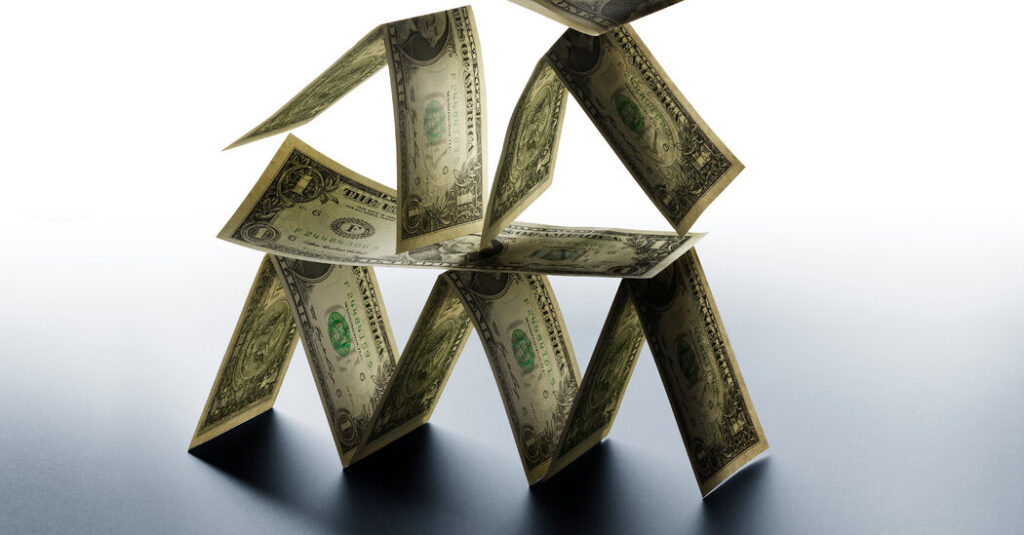The G7 meeting in Italy last week may have set a record. Has a gathering of free world leaders ever been more unpopular? Approval ratings ranged from about 40% for Italian Prime Minister Giorgia Meloni to 21% for French President Emmanuel Macron and 13% for Japanese Prime Minister Fumio Kishida. Last year's Edelman Trust Barometer found that only 20% of people in G7 countries believe they and their families will be better off in five years. Another Edelman survey in 2020 found widespread distrust in capitalism in countries around the world, driven by “growing feelings of inequality and unfairness in the system.”
Why is there so much dissatisfaction with an economic system that is supposed to bring us unparalleled prosperity? Ruchir Sharma, chairman of Rockefeller International and columnist for the Financial Times, has the answer in two words: easy money. In his eye-opening new book, What Went Wrong with Capitalism?, Sharma makes a compelling case.
“When the price of borrowing goes to zero, everything else becomes hyper-inflated,” Sharma told me this week. To give one example, in 2010, at the start of the era of ultra-low and even negative interest rates, the average selling price of a home in the U.S. was hovering around $220,000. By the beginning of this year, it was over $420,000.
Nowhere is inflation (broadly defined) more evident than in global financial markets. In 1980, global financial markets were worth a combined $12 trillion, the same as the size of the global economy at the time. After the pandemic, these markets were worth $390 trillion, or roughly four times the world's gross domestic product, Sharma noted.
In theory, easy money should bring broad benefits to ordinary people, from workers with 401(k) plans to consumers taking out low-interest mortgages. In reality, easy money has destroyed much of what made capitalism an engine of middle-class prosperity, favoring the elderly and the super-rich.
First came real and financial asset inflation, then consumer price inflation, and then rising interest rates to combat inflation, which in turn raised funding costs and inevitably created political pressure for a return to easy monetary policies.
That's not a bad thing for wealthy Americans who own property or have low-interest mortgages. But for Americans who rely heavily on credit, it's devastating. “For families already struggling with high prices, dwindling savings and slowing wage growth, rising borrowing costs are pushing them further into the financial hole,” The Times' Ben Casselman and Gina Smiarek reported in May.
Sharma pointed to more subtle damage. “Investors can't make anything on Treasury bonds that are yielding near zero,” so “they take bigger risks and buy assets that promise higher returns, from fine art to high-yield debt from zombie companies that make so little profit they can't even make the interest payments and survive by taking on new debt,” he said. A recent Associated Press analysis found that there are 2,000 zombie companies (once thought to be primarily a Japanese phenomenon) in the U.S. Together, these companies owe $1.1 trillion in loans that must be repaid between now and September.
The damage to the economy as a whole is showing up in other ways: inefficient markets that no longer prudently allocate capital to its most productive uses, large corporations gobbling up small businesses and deploying lobbyists to bend government rules in their favor, and the breakdown of prudent economic practices. “The most successful investment strategy of the 2010s was to buy the most expensive tech stocks and then buy more as prices and valuations rose,” Sharma writes, quoting podcaster Joshua Brown.
But it's capitalism itself that's been hit hardest, with a widespread and well-founded belief that the system is broken and particularly biased against the poor and the young. “A generation ago, it took the typical young family three years to save up a down payment on a house,” Sharma writes in his book. “By 2019, with no return on savings, it was taking 19 years.”
The social consequence of this is anger and the political consequence is populism.
Sharma is no fan of Bidenonomics, which he describes as “a century of government expansion accelerated by unprecedented stimulus and politically guided investment.” But unlike other prominent Wall Street investors, he's no fan of Donald Trump, the former president's love of easy monetary policy, tax cuts without spending cuts, and record budget deficits.
“He promised to dismantle the administrative state but ended up adding 3,000 new regulations a year at the same pace as his predecessor,” Sharma said of Trump. “His use of presidential power for personal purposes has shattered historical precedent and expanded rather than limited the scope of government. Despite their policy differences, America's two leading candidates are committed and fearless nationalists and no friends of competitive capitalism.”
What happens when both major parties cling to two versions of the same failed idea — and when leaders of the progressive left and populist right try to make the problem even worse with even easier lending and runaway spending?
The answer is that we are wandering in a mist, and the cliffs are closer than we think.



